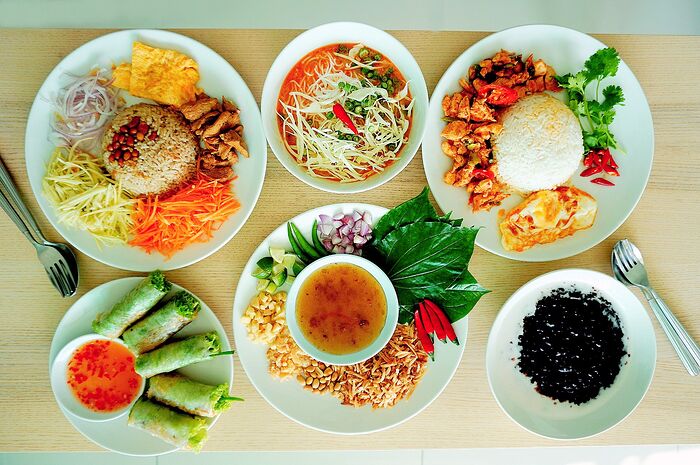Sometimes, I wondered what would have been, if Penang had remained under Thai rule today. In a quirk of history, with the intervention of the British Empire, Penang had ended up being part of present-day Malaysia.
Back in 1826, in an effort to preserve the Kingdom of Siam’s independence, King Rama III and Great Britain signed the 𝘽𝙪𝙧𝙣𝙚𝙮 𝙏𝙧𝙚𝙖𝙩𝙮. The treaty affirmed that Gret Britain and Siam respect each others’ territories. The British agreed that Kedah, Perlis, Terengganu, and Pattani were Siamese provinces, while Penang and Province Wellesley belonged to the British, and also that the Siamese would permit the British to trade in their two provinces of Kelantan and Terengganu.
Then, in 1909, the 𝘼𝙣𝙜𝙡𝙤-𝙎𝙞𝙖𝙢𝙚𝙨𝙚 𝙏𝙧𝙚𝙖𝙩𝙮 were signed between Rama V (King Chulalongkorn) and Great Britain which established the border of present-day Malaysia and Thailand.
The area around present-day Pattani, Narathiwat, southern-most Songkhla, Satun, and Yala remained under Thai control.
In return, Thailand relinquished its claims to sovereignty over their erstwhile provinces: Kedah (Thai: ไทรบุรี, Saiburi), Kelantan (กลันตัน, Kalantan), Perlis (ปะลิส, Palit) and Terengganu (ตรังกานู, Trangkanu), which became British protectorates, and later to become part of the Federation of Malaysia in 1957.
However, Thai/Siamese influences remained strong in Penang up till today, as the Siamese have been present in Penang since its founding by Captain Francis Light back in 1786.
Fast forward to breakfast-time this morning, where I’d gotten some Thai breakfast options from my local market:
-
Miang kham (เมี่ยงคำ) - wild betel leaf wraps. Central to this beautiful appetizer/snack is the sticky sweet-sour-spicy sauce, made with palm sugar, fish sauce, and shrimp paste. Finely-chopped raw ingredients go into the wraps: galangal, dried shrimps, toasted coconut shreds & peanuts, lime and chilis.
-
Gai pad prik gaeng (ไก่ผัดพริกแกง) - bite-sized chicken pieces fried with red curry paste, long beans and lime leaves. Absolutely spicy dry-ish stir-fry. It’s traditionally accompanied with a fried egg and served atop steamed white rice.
-
Khanom jeen namya (ขนมจีนนำ้ยา) - Thai rice noodles, in a spicy minced fish gravy, enriched with coconut milk. The noodle dish was topped with finely-shredded raw cabbage and long beans. Another sear-your-tongue dish to jump-start your day like 5 cups of coffee never could.
-
Khao kluk kapi (ข้าวคลุกกะปิ) - fried rice with fermented shrimp paste. This was a very tasty dish - the rice was fried with “kapi” (Thai-style fermented shrimp paste) which gave it a savory, umami-overload. The fried rice is then served with toasted groundnuts, finely-shredded green (unripe) mango, crunchy raw carrots, stir-fried chicken, egg omelette and finely-sliced red onions.
-
Po pia sod (ปอเปี๊ยะสดไทย) - Thai fresh spring rolls, a good alternative to the more common deep-fried (greasier) po pia tod (ปอเปี๊ยะทอด).
-
Khao niew dam (ข้าวเหนียวดำ) - simmered porridge-like sweetened black glutinous rice, served with coconut milk.
The Thai vendors’ operating days are erratic - they were all here today (a Friday), but all of them weren’t around last Friday.




















